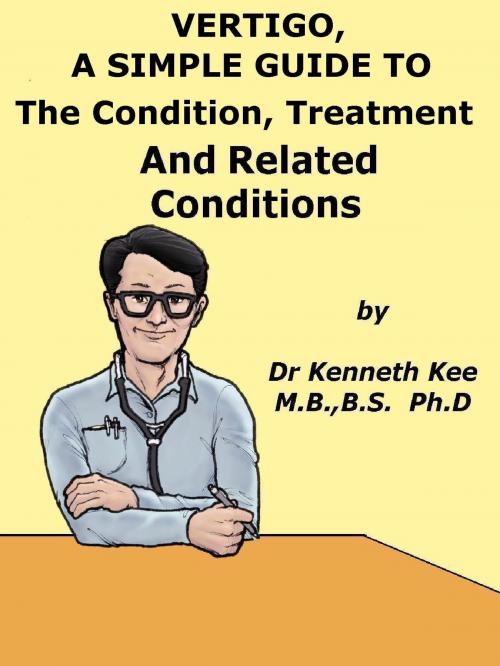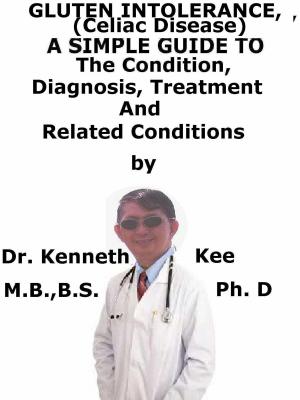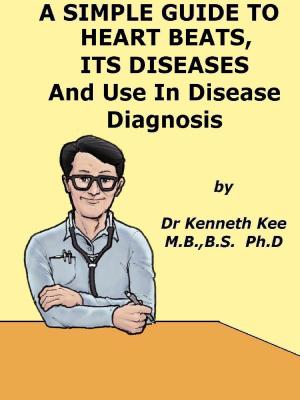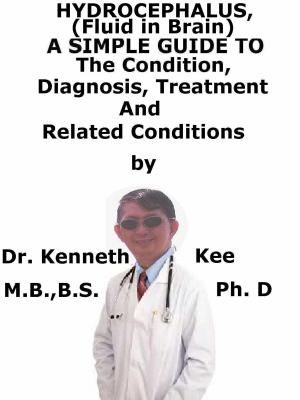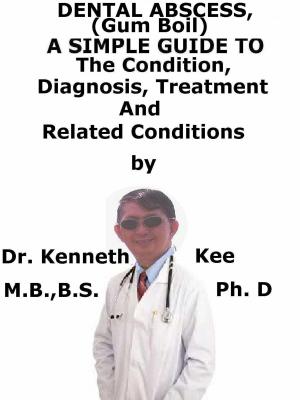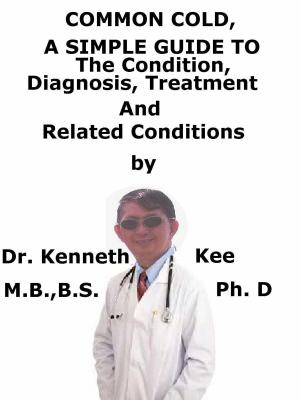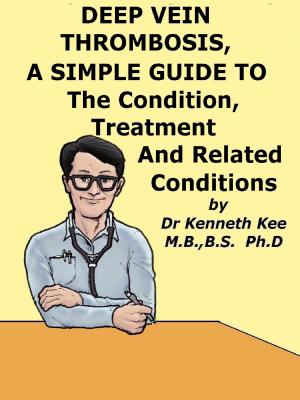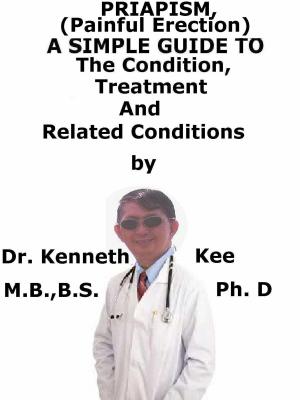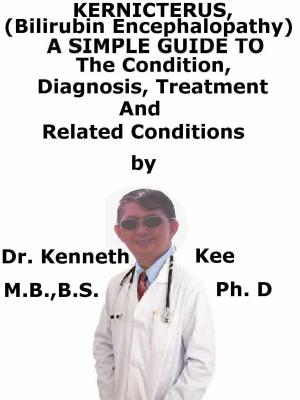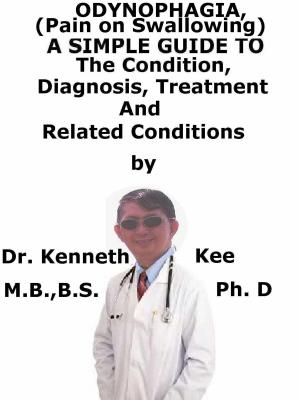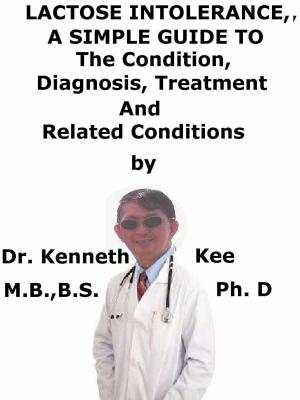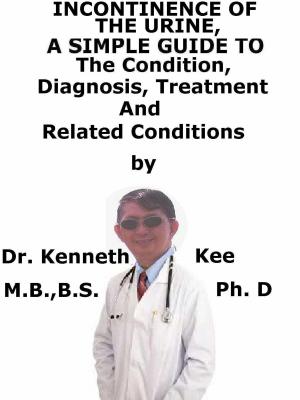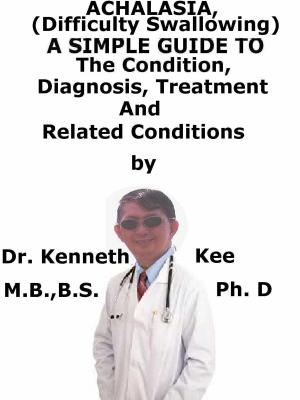Vertigo, A Simple Guide to The Condition, Treatment And Related Conditions
Nonfiction, Health & Well Being, Medical, Specialties, Otorhinolaryngology, Health, Ailments & Diseases, Nervous System & the Brain| Author: | Kenneth Kee | ISBN: | 9781310038266 |
| Publisher: | Kenneth Kee | Publication: | February 8, 2015 |
| Imprint: | Smashwords Edition | Language: | English |
| Author: | Kenneth Kee |
| ISBN: | 9781310038266 |
| Publisher: | Kenneth Kee |
| Publication: | February 8, 2015 |
| Imprint: | Smashwords Edition |
| Language: | English |
Vertigo is a feeling of moving or spinning
Of the environment even if the person is not moving
It is not as in the movie a fainting or height fear
But an imbalance in the cochlea in the inner ear
The person feels though the room is spinning and nausea
He may hear buzzing sounds or sometimes cannot hear
Certain positions of the head make the vertigo begin
An infection may have irritated the delicate labryrinth
Certain vestibular tests may elicit nystagmus based on the position
This will determine which semicircular canal is the cause of the condition
Treatment is with anti vertigo and antihistamine medication
This normally will relieve the spinning condition.
Rarely there may be side effects to the medication
Such as dyskinesia, drowsiness and allergic reactions
Most medicines will resolve the vertigo and vomiting
They will have a stabilizing effect on dizziness and fainting
-An original poem by Kenneth Kee
Interesting Tips about the Vertigo
A Healthy Lifestyle
-
Take a well Balanced Diet
-
Treatment of Vertigo: 1. Repositioning head maneuvers
Recommended treatment for most forms of BPPV employs particle repositioning head maneuvers (e.g. Epley’s and Semont’s maneuvers that move the displaced otoconia out of the affected semicircular canal.
These maneuvers involve a specific series of patterned head and trunk movements that can be performed in a doctor’s office in about 15 minutes.
Particle repositioning head maneuvers are considered to be more effective than medication or other forms of exercise-based therapy in treating posterior canal BPPV.
Motion sickness medications are sometimes helpful in controlling the nausea associated with BPPV and are sometimes used to help with acute dizziness during particle repositioning maneuvers:
a. Stemetil
b. Dimenhydrinate
c. Cyclizine
- Keep bones and body strong
Bone marrow produces our blood
Eat foods rich in calcium like yogurt, cheese, milk, and dark green vegetables.
Eat foods rich in Vitamin D, like eggs, fatty fish, cereal, and fortified milk.
Eat food rich in Vitamins B and C such as green vegetables and fruits
Zinc and other minerals are important to the body
- Get enough rest and Sleep
Avoid stress and tension
- Exercise and stay active.
It is best to do weight-bearing exercise such as walking, jogging, stair climbing, dancing, or lifting weights for 2½ hours a week.
One way to do this is to be active 30 minutes a day at least 5 days a week.
Begin slowly especially if a person has not been active.
- Do not drink more than 2 alcohol drinks a day for a man or 1 alcohol drink a day for a woman.
Alcohol use also increases the chance of falling and breaking a bone.
Alcohol can affect the neurons and brain cells.
- Stop or do not begin smoking.
It also interferes with blood supply and healing.
Chapter 1
Vertigo
Vertigo is the sensation of spinning or movement of the body even when the body is not moving.
It is caused by abnormal function of the organ of balance and the vestibular nerve in the inner ear.
It is especially common in the elderly especially in the morning when they get up from bed.
In fact last week I had 3 elderly patients who had vertigo after waking up in the morning.
It is postulated that there may be a preceding upper respiratory tract infection before this occurrence of vertigo.
It is also very common in people with Meniere’s Disease.
Unlike in the Movie “Vertigo” it is not the fear of heights.
What is Vertigo?
Vertigo is an unpleasant symptom where illusionary perception of movement (spinning or wobbling) of the body and of the surrounding area occurs.
Any dysfunction of the organ of balance and the nerve of balance (vestibular) in the inner ear can cause vertigo.
Vertigo is a feeling of moving or spinning
Of the environment even if the person is not moving
It is not as in the movie a fainting or height fear
But an imbalance in the cochlea in the inner ear
The person feels though the room is spinning and nausea
He may hear buzzing sounds or sometimes cannot hear
Certain positions of the head make the vertigo begin
An infection may have irritated the delicate labryrinth
Certain vestibular tests may elicit nystagmus based on the position
This will determine which semicircular canal is the cause of the condition
Treatment is with anti vertigo and antihistamine medication
This normally will relieve the spinning condition.
Rarely there may be side effects to the medication
Such as dyskinesia, drowsiness and allergic reactions
Most medicines will resolve the vertigo and vomiting
They will have a stabilizing effect on dizziness and fainting
-An original poem by Kenneth Kee
Interesting Tips about the Vertigo
A Healthy Lifestyle
-
Take a well Balanced Diet
-
Treatment of Vertigo: 1. Repositioning head maneuvers
Recommended treatment for most forms of BPPV employs particle repositioning head maneuvers (e.g. Epley’s and Semont’s maneuvers that move the displaced otoconia out of the affected semicircular canal.
These maneuvers involve a specific series of patterned head and trunk movements that can be performed in a doctor’s office in about 15 minutes.
Particle repositioning head maneuvers are considered to be more effective than medication or other forms of exercise-based therapy in treating posterior canal BPPV.
Motion sickness medications are sometimes helpful in controlling the nausea associated with BPPV and are sometimes used to help with acute dizziness during particle repositioning maneuvers:
a. Stemetil
b. Dimenhydrinate
c. Cyclizine
- Keep bones and body strong
Bone marrow produces our blood
Eat foods rich in calcium like yogurt, cheese, milk, and dark green vegetables.
Eat foods rich in Vitamin D, like eggs, fatty fish, cereal, and fortified milk.
Eat food rich in Vitamins B and C such as green vegetables and fruits
Zinc and other minerals are important to the body
- Get enough rest and Sleep
Avoid stress and tension
- Exercise and stay active.
It is best to do weight-bearing exercise such as walking, jogging, stair climbing, dancing, or lifting weights for 2½ hours a week.
One way to do this is to be active 30 minutes a day at least 5 days a week.
Begin slowly especially if a person has not been active.
- Do not drink more than 2 alcohol drinks a day for a man or 1 alcohol drink a day for a woman.
Alcohol use also increases the chance of falling and breaking a bone.
Alcohol can affect the neurons and brain cells.
- Stop or do not begin smoking.
It also interferes with blood supply and healing.
Chapter 1
Vertigo
Vertigo is the sensation of spinning or movement of the body even when the body is not moving.
It is caused by abnormal function of the organ of balance and the vestibular nerve in the inner ear.
It is especially common in the elderly especially in the morning when they get up from bed.
In fact last week I had 3 elderly patients who had vertigo after waking up in the morning.
It is postulated that there may be a preceding upper respiratory tract infection before this occurrence of vertigo.
It is also very common in people with Meniere’s Disease.
Unlike in the Movie “Vertigo” it is not the fear of heights.
What is Vertigo?
Vertigo is an unpleasant symptom where illusionary perception of movement (spinning or wobbling) of the body and of the surrounding area occurs.
Any dysfunction of the organ of balance and the nerve of balance (vestibular) in the inner ear can cause vertigo.
